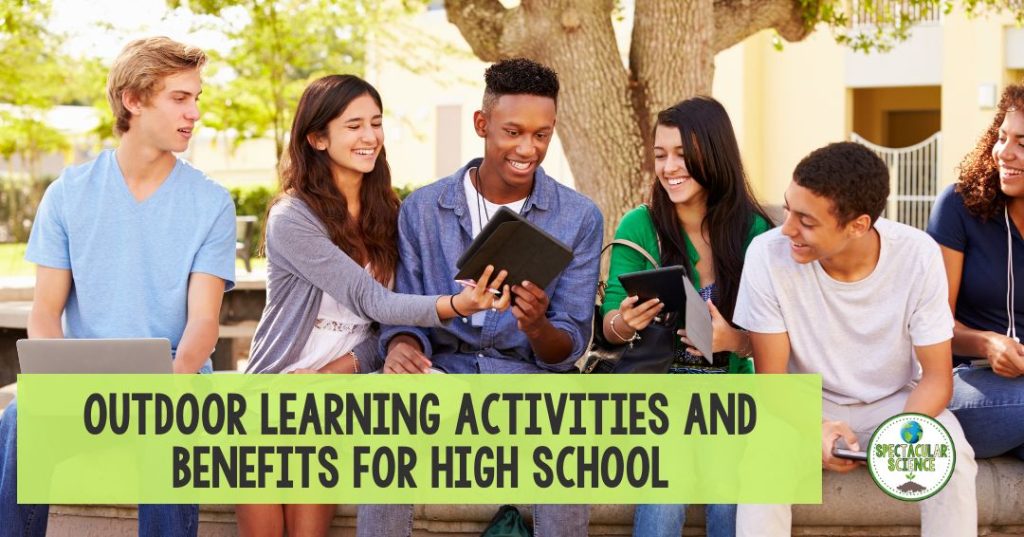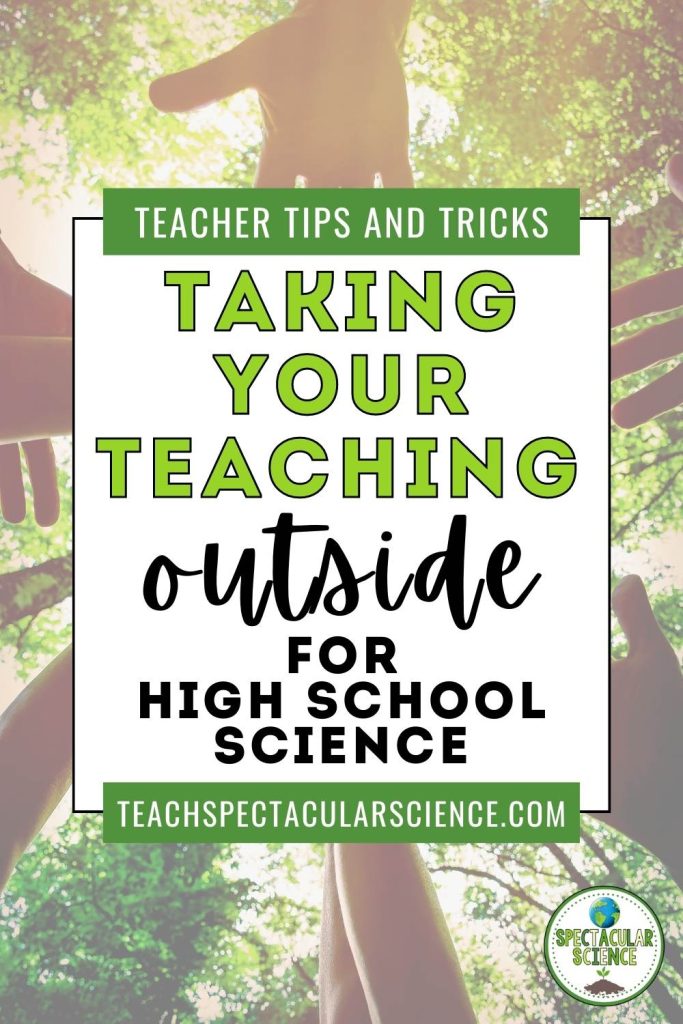
When the weather is nice, do you find your students (and yourself!) staring out the window and wishing you were outside rather than in the classroom? I absolutely do – so why not take the learning outside when you can? Outdoor learning doesn’t have to be a significant investment in the setup; keeping things simple can benefit students and their learning in a variety of ways.
Benefits of Outdoor Learning Activities
The best part of outdoor learning is it is adaptable to any subject. So whatever you’re teaching, when you shift to teaching secondary students outside, there are a number of benefits for students, their mental health, and their overall learning.
Here are some suggested outdoor learning activities and five benefits that I’ve seen first-hand when I’ve taken my students to learn outside.

- Active learning: Teaching outside can provide students with opportunities to learn through hands-on, experiential activities that actively engage them in the learning process.
Some simple no-fuss options include moving discussions or readings to outdoor spaces. If you’re teaching science classes then conduct experiments or collect data in natural settings. Add in more movement with a scavenger hunt like this Earth Science-focused photographic option. Or make specific connections to specific lessons with this Environmental Connections Unit that asks “What are connections within our environment?” where students can learn, observe, research, and debate.

- Improved engagement: Many students find traditional classroom settings to be monotonous and may disengage from the learning process, especially when the weather gets nicer in some parts of the world. Moving the classroom outside can provide a change of scenery that can help to re-engage students and keep them interested in the material.
One way to encourage this engagement is to get students to pitch locations for learning, within parameters of course! Where around the school would they like to go? Is it the bleachers near the field or perhaps there’s a shady spot with some good trees to explore (and/or lean against!)
- Enhancing creativity: Outdoor learning can help to foster creativity and innovation by encouraging students to think outside the box and come up with unique solutions to problems. This can be particularly helpful in subjects such as art and design, where students can be inspired by natural surroundings.
Use this as an opportunity to learn outside by solving outdoor ‘problems’. What is an issue that people encounter outside and what solutions can students propose for the problem? Take it outside to research and then test these solutions. This engineering-design and critical thinking process is a great way to develop students’ soft skills with problem-solving and creative and critical thinking.

- Social-emotional learning: Outdoor learning can also provide opportunities for social-emotional learning, such as team building, leadership skills, and communication skills through collaborative outdoor activities.
Think about what you do in class early or late in the year to build relationships in class, what can be done outside? Then consider what activities you do in class that might be adaptable to learning outside.
Again, this doesn’t have to be something that requires a lot of prep but it does require some strong classroom management skills since the boundaries of four walls and access inside/outside to restrooms becomes something else to navigate. This is why I tend to keep outdoor learning to late in the school year when we’ve had a chance to establish a solid foundation for behavior and classroom guidelines.
- Connection to nature: Spending time outdoors can help students develop a deeper connection to the natural world, which can foster a sense of environmental stewardship and a desire to protect the planet. This is particularly important in an age where issues such as climate change and environmental degradation are becoming more pressing.
This connection to nature can be about observing it on school property. Make it an assessment of the area to examine what elements of the natural environment are present and functional on campus. Students might even take the opportunity to propose a project or lobby for changes from the admin or school board; early opportunities for community activism can shape later environmental stewardship!
Last Words on Learning Outside
Outdoor learning really has many benefits but it doesn’t require a bit of preparation before leaving the four walls of the classroom.
Here are some teacher tips that I’ve learned from experience:
- Make sure to ask admin for approval.
- Assess the area before bringing students outside (make sure it is prepped and ready).
- Clarify student expectations before going outside.
- Have materials ready to go. (This might also mean some hats and sunscreen too!)
And when you’re outside make sure you also take a moment to take a deep breath because all of the benefits listed in this post are also benefits for the teacher too!

















